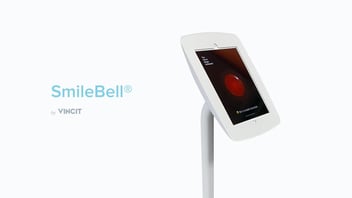Here at Vincit California, we have helped clients from Fortune 500 healthcare companies to small healthcare start-ups develop their
healthcare applications. Through our wide range of experiences, we have found that the healthcare industry has some unique requirements that many other verticals who are developing applications do not have to consider.
One of these industry-specific challenges is the fact that healthcare apps will often have many users, including doctors and health professionals, administrative staff, and patients. The success of your health app depends on its ability to balance all of these different factors and players. To be successful in creating your healthcare application, you need to understand each user party, and which features will make the app work best for them.
Patient Facing Health Apps
When constructing an application for patients, the focus should be on ease of use and a strong UI. Consider the features that typical patients would use frequently, such as:
- Setting appointments
- Contacting doctors or staff members
- Looking at medical records or test results
- Fill prescriptions and find pharmacies
- Finding doctors
- Search for facilities
- Paying for medical bills
- Viewing medical number or card
Patients need to be able to learn how to use the app in a matter of seconds. Therefore, the application needs to be set up in a way that is comfortable and easy to navigate, such as an easy
user expereince & interface design. In addition, because these applications deal with healthcare, users need to feel a sense of reliability and security while using the app. Because of the sensitive or private information shared through
mobile healthcare apps, patients should not experience outages or breakdowns on their applications.
Doctor & Healthcare Professional Facing Apps
When it comes to applications designed for use by doctors and healthcare professionals, the
importance of user experience and requirements can be vastly different from those designed for patients. Patients want simplicity, easy answers, and quick execution. Doctors and healthcare professionals, on the other hand, need accessibility and information. Efficiently treating patients and providing quality care requires the ability to access health records and information on current treatments.
In addition, doctors and healthcare professionals typically handle many patients at once. Therefore, healthcare applications need to be able to help doctors manage their own schedule, while also keeping all of their patients’s records organized. Requirements and features that these healthcare applications need include:
- Managing healthcare professionals’ schedules
- Updating and accessing patients’ health records
- Prescribing medicine for patients
- Communicating with patients and other professionals
Healthcare Administrator Facing Apps
Finally, the third user group for healthcare applications is health care administrators. These individuals often have very different requirements than patients or doctors do. While patients typically want beautiful design and an easy to navigate experience, healthcare administrators need power and the ability to manage and store many details. Requirements and features that these healthcare applications need include:
- Accessing and updating health records
- Database management for thousands of patients
- Storing of sensitive information, including insurance and personal information
- Ability to schedule, edit, and manage both doctor and patient schedules
- Tracking of payments and balances for each patient
For the healthcare administrators, the key to success is an app’s ability to securely manage a multitude of complex items and tasks, while still being usable and easy to navigate.
Conclusion
Healthcare app development comes with a very complex set of requirements. One thing all of these apps have in common is the protection of sensitive patient data. Any time you are storing this type of data, you must be aware of HIPAA compliance regulations.
When developing a health app or any
mobile app, it is important to keep all parties and their requirements at the top of the priority list in order to create an app that can successfully be used by all parties. Otherwise, the app may only be able to partially cover the needs of a healthcare organization, or, worst of all, the application may go unused because it is too frustrating for everyone involved.
Source Photo by The National Cancer Institute



